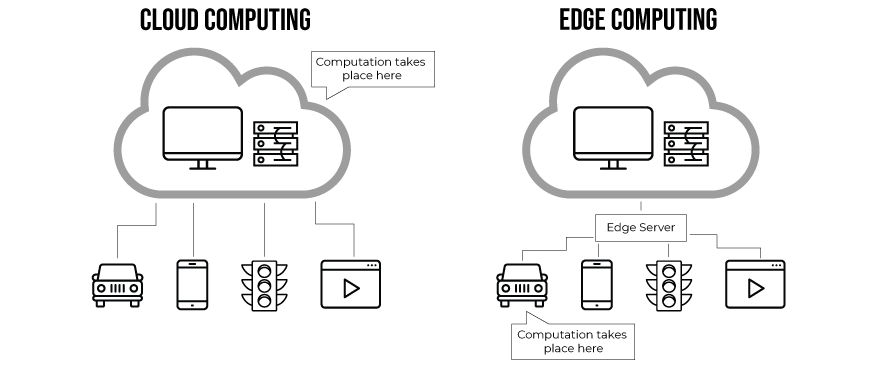No products in the cart.
Cutting-Edge Data Centers: How AI is Driving Innovation
Home Cutting-Edge Data Centers: How AI is Driving Innovation
- Home
- Resource Hub
- Millennium Blog
- Cutting-Edge Data Centers: How AI is Driving Innovation

Cutting-Edge Data Centers: How AI is Driving Innovation
We are now in the Fourth Industrial Revolution, driven by data that empowers AI, which is reshaping telecommunications and data centers. AI-powered applications, from IoT devices, like home smart appliances, to real-time data processing, are increasing the demand for high-speed fiber connections, especially in edge data centers. These centers are located close to end-users and push data processing to the network edge, reducing latency and improving real-time performance.
Millennium is instrumental in this transformation, offering end-to-end broadband solutions, from engineering and funding to fiber connectivity materials and equipment. With our industry expertise, we help businesses scale efficiently while meeting AI’s growing demands. As more edge data centers emerge, Millennium’s comprehensive fiber solutions empower network owners and contractors to stay ahead in this rapidly evolving landscape.
Data Center Fiber Connectivity Supports Edge Data Centers
Data centers are the backbone of the internet, housing servers, routers, storage systems, and other critical equipment that manage, process, store, and route data between servers and computers. The evolution from the early 1940s supercomputers housed in one room to thousands of servers within a single facility to AI-powered data centers is phenomenal. According to Statista research, in 2023, 89% of telecommunication companies surveyed across the globe reported they were using, implementing, assessing, or piloting AI integrations. Millennium continues to support this acceleration and transformation by providing fiber, the ideal future-proof network infrastructure, offering unmatched speed and minimal latency for AI-based applications and edge computing.
Common Data Center Fiber Types
The types of fiber used in data centers play a critical role in the quality of digital content delivery. Fiber remains at the top of its class for speed, reliability, and latency. Latency is especially important for activities related to AI communication and the processing of large amounts of data.

Multimode fiber (MMF) The four types are OM1, OM2, OM3, and OM4. These cables transmit data using multiple light pathways throughout the core, which is ideal for connecting servers and switches within the same facility. They are best for short to medium distances, making them widely used in intra-data center connections.
Single-mode fiber (SMF) Common types are OS1 and OS2. These two options support high bandwidths across long distances, which makes them more expensive than other fiber types. This option is optimal for network-intensive IoT devices, streaming, and high-capacity file transfers. It is also a more secure and future-proof option.
Get the right fiber for your project.
Why Do We Need Edge Computing?

Edge data centers play a vital role in AI’s growing demands. As businesses shift from cloud to edge computing, local data processing becomes crucial due to the cloud’s limitations in handling large, real-time data sets. For example, security footage from a single camera for one day is about a gig and a half of data, and data centers have anywhere from 19 to 50 cameras. The footage generates immense data that isn’t possible to process over the cloud, so data centers need a local device at the network’s edge to handle the level of local data processing required by data-intensive applications. Processing large volumes of data locally before sending summarized data to the cloud reduces latency and accelerates access to real-time data and analysis. Furthermore, having the edge data centers near end users expedites access to real-time data to run AI-driven applications like autonomous cars and IoT devices, enabling faster, more efficient operations as the need for the internet continues to increase.
Cutting-edge data centers are designed to maximize AI monitoring and predictive analytics capabilities, reducing downtime and interruptions in internet service for consumers. These advanced data centers feature smart sensors for more effective and precise temperature control and anomaly detection. Sensors in each suite that can detect potential power supply failure from temperature changes allow data center managers to monitor environmental changes and anomalies down to individual aisles of servers. Having cameras in each suite also improves data center security. AI can quickly process and compile footage from multiple cameras in minutes to track unauthorized movement throughout the data center. AI’s unmatched efficiency in handling large amounts of data and identifying anomalies revolutionizes data center management. Through predictive maintenance and energy efficiency, AI ensures seamless operations, resulting in improved reliability and performance for internet users.
The Future of AI: Hardware and Efficiency
AI innovation is disrupting telecommunications and other industries at a faster rate than ever before. Here are some fast-shifting trends to watch if you’re in data center management or plan to bring high-speed fiber to data centers. The future of AI is rooted in overcoming power consumption challenges. The U.S. electrical grid cannot support the widespread use of graphics processing units (GPUs) by every company. GPU chips are needed to run AI and machine learning programs and are critical to supporting edge data center servers. The AI industry is also straining data centers with heavy power and data connectivity demand. To meet these challenges, Bell Labs predicts that by 2025, 60% of servers will be in edge data centers (Corning, 2021). Tech giants, Intel and Microsoft, are currently heavily investing in developing AI chipsets that are more power-efficient and environmentally friendly compared to the current market leader, whose chips are power-hungry and run hot. This shift toward more efficient AI hardware, with fiber networks as the foundation, will drive ongoing innovation in data centers, enhancing sustainability and performance. As new edge data centers are built, broadband businesses will have opportunities to collaborate with data centers, improving internet quality and supporting the AI revolution.

Embracing AI in Data Centers
AI is revolutionizing data center operations, reshaping the technology landscape by driving demand for high-speed fiber connections that can support advanced computing needs like edge computing and real-time analytics. This transformation is creating unprecedented opportunities for inside plant contractors and network owners to position themselves as leaders in the deployment of AI-ready infrastructure. With AI applications requiring seamless data transfer, reduced latency, and robust network reliability, the need for cutting-edge broadband solutions has never been greater.
By partnering with Millennium, businesses gain a strategic edge through access to a full suite of broadband solutions. Millennium offers comprehensive services that include engineering expertise, funding options, and a vast inventory of high-quality materials and state-of-the-art equipment. Whether building fiber networks to accommodate AI’s vast data requirements or ensuring infrastructure resilience for future innovation, Millennium provides the tools and support necessary to succeed in this rapidly evolving technological landscape. Together, we can help you stay ahead of AI-driven demand and capitalize on this era of digital transformation.
- Feasibility Studies & Network Design Plans
- Financing & Grants
- Project Resource Management
- Material Supply & Logistical Planning
- Equipment Leasing & Rentals
Sources: https://www.fortinet.com/resources/cyberglossary/data-center#:~:text=Components%20of%20a%20Data%20Center&text=The%20essential%20components%20of%20any,with%20a%20lot%20more%20memory. Retrieved 6/25/2024. https://storymaps.arcgis.com/stories/a21d93abf29d4b6990370cfcba143cd9 Retrieved 6/25/2024. https://time.com/6300942/ai-progress-charts/ Retrieved 7/2/2024. https://www.ibm.com/blog/what-is-data-center-management/ Retrieved 7/2/2024. https://datacenterhawk.com/resources/hawkpodcast/why-is-data-center-connectivity-important-data-center-fundamentals Retrieved 7/2/2024. https://cybermagazine.com/cloud-security/history-cloud-computing Retrieved 7/3/2024. https://www.corning.com/catalog/coc/documents/white-papers/LAN-2814-AEN.pdf Retrieved 7/3/2024. https://www.corning.com/optical-communications/worldwide/en/home/the-signal-network-blog/2023-data-center-trends.html Retrieved 7/3/2024. https://www.cnn.com/2023/08/06/tech/ai-chips-supply-chain/index.html Retrived 7/3/2024. https://www.marketsandmarkets.com/Market-Reports/edge-data-center-market-142018469.html Retrieved 7/9/2024. https://blogs.nvidia.com/blog/what-is-edge-computing/ Retrieved 7/17/2024. https://phoenixnap.com/blog/edge-server#:~:text=While%20edge%20servers%20perform%20the,%2C%20or%20self%2Ddriving%20car Retrieved 7/22/2024. https://www.statista.com/statistics/1500259/ai-use-in-telecoms-companies-worldwide/ Retrieved 11/25/2024.



